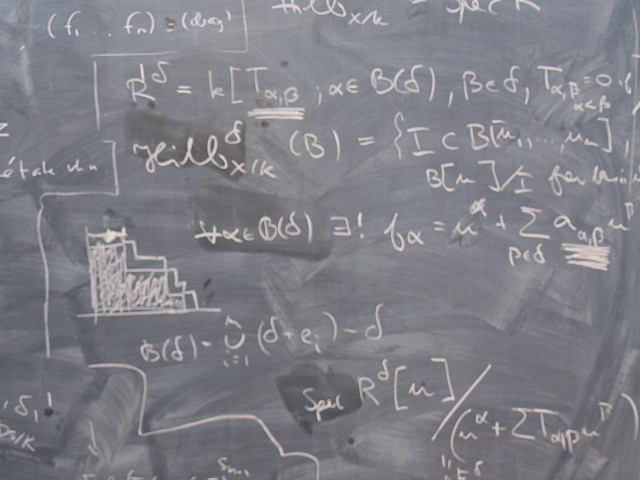- Stochastic processes. Markov chains in discrete and continuous time. Chapman-Kolmogorov equations. Stationary probabilities. Poisson process. Birth-death processes.
- Basic concepts in queuing theory. Little’s theorem.
- Arrival processes and service time. Queuing disciplines. Stationary probabilities. Offered load (traffic). Blocked load. Effective load. Utilization. Blocking probability.
- Markovian wait systems.
- M/M/m: Queuing systems with m servers, infinite number of waiting positions, and infinite number of customers.
- M/M/m/K: queuing system with m servers, limited number (=K) waiting positions, and infinite number of customers.
- M/M/m/K/C: queuing system with m servers, limited number (=K) waiting positions, and limited number of customers (=C).
- Markovian loss systems: Erlang’s loss system, Engset’s loss system, Binomial (Bernoulli’s) loss system.
- Semi-markovian M/G/1 and G/M/l queuing systems. Pollacsek-Khinchin formula.
- Survey on open and closed Jackson queuing networks.
HF2000 Queuing Theory 7.5 credits
This course has been discontinued.
Decision to discontinue this course:
No information inserted
Information per course offering
Course offerings are missing for current or upcoming semesters.
Course syllabus as PDF
Please note: all information from the Course syllabus is available on this page in an accessible format.
Course syllabus HF2000 (Autumn 2007–)Content and learning outcomes
Course contents
Intended learning outcomes
After completion of the course the student should be able to:
- Define and explain basic concepts in the theory Markov processes, M/M/m, M/M/m/K, and M/M/m/K/C queuing systems
- Derive and apply main formulas for some properties (such as stationary probabilities, average waiting and system time, expected number of customers in the queue, etc.) of M/M/m, M/M/m/K, and M/M/m/K/C queuing systems
- To calculate the traffic intensity, blocked traffic, and the utilization of some queuing systems
- Solve some simple problems on queuing networks
- Analyze and solve problems using computer aid (Maple, Matlab, or Mathematica)
Literature and preparations
Specific prerequisites
Basic knowledge in calculus, linear algebra and mathematical statistics.
Literature
To be announced at course start. Last time the following book was used:
Hock, Ng Cheee, Queuing Modelling Fundamentals, John Wiley & Sons Ltd.
Examination and completion
Grading scale
Examination
- RED1 - Assignment, 3.0 credits, grading scale: P, F
- TEN1 - Examination, 4.5 credits, grading scale: A, B, C, D, E, FX, F
Based on recommendation from KTH’s coordinator for disabilities, the examiner will decide how to adapt an examination for students with documented disability.
The examiner may apply another examination format when re-examining individual students.
If the course is discontinued, students may request to be examined during the following two academic years.
Other requirements for final grade
Passed exam (TEN1; 4.5 c.), grading A-F.
Passed lab work (RED1; 3 cr.), grading P/F.
Examiner
Ethical approach
- All members of a group are responsible for the group's work.
- In any assessment, every student shall honestly disclose any help received and sources used.
- In an oral assessment, every student shall be able to present and answer questions about the entire assignment and solution.